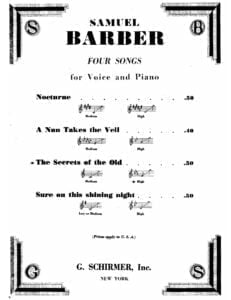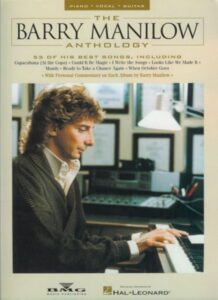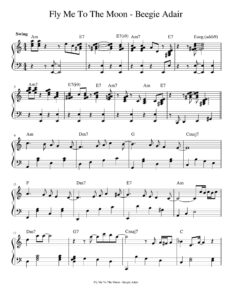Beethoven Symphony No 9 in D minor, Op. 125 (with piano sheet music arrangements in our Library)

Beethoven’s Symphony No. 9
Symphony No. 9 in D Minor, Op. 125, byname the Choral Symphony, orchestral work in four movements by Ludwig van Beethoven, remarkable in its day not only for its grandness of scale but especially for its final movement, which includes a full chorus and vocal soloists who sing a setting of Friedrich Schiller’s poem “An die Freude” (“Ode to Joy”). The work was Beethoven’s final complete symphony, and it represents an important stylistic bridge between the Classical and Romantic periods of Western music history. Symphony No. 9 premiered on May 7, 1824, in Vienna, to an overwhelmingly enthusiastic audience, and it is widely viewed as Beethoven’s greatest composition.
Beethoven’s Symphony No. 9 was ultimately more than three decades in the making. Schiller’s popular “Ode to Joy” was published in 1785, and it is possible that Beethoven made his first of multiple attempts to set it to music in the early 1790s. He clearly revisited the poem in 1808 and 1811, as his notebooks include numerous remarks regarding possible settings. In 1812 Beethoven determined to place his setting of “Ode to Joy” within a grand symphony.
Ten more years passed before that symphony’s completion, and during that time Beethoven agonized over the composition’s every note. His notebooks indicate that he considered and rejected more than 200 different versions of the “Ode to Joy” theme alone. When he finally finished the work, he offered to the public a radically new creation that was part symphony and part oratorio—a hybrid that proved puzzling to less-adventuresome listeners. Some knowledgeable contemporaries declared that Beethoven had no understanding of how to write for voices; others wondered why there were voices in a symphony at all.
The story of the premiere of Symphony No. 9 is widely told and disputed. Beethoven had steadily lost his hearing during the course of the symphony’s composition, and by the time of its premiere he was profoundly deaf. Although he appeared onstage as the general director of the performance, kapellmeister Michael Umlauf actually led the orchestra with the conductor’s baton, taking tempo cues from Beethoven.
According to one account of the event, the audience applauded thunderously at the conclusion of the performance, but Beethoven, unable to hear the response, continued to face the chorus and orchestra; a singer finally turned him around so that he could see evidence of the affirmation that resounded throughout the hall. Other accounts maintain that the dramatic incident occurred at the end of the second movement scherzo. (At the time, it was common for audiences to applaud between movements.) Whenever the applause occurred, that it passed unnoticed by Beethoven makes clear that he never heard a note of his magnificent composition outside his own imagination.
Symphony No. 9 broke many patterns of the Classical style of Western music to foreshadow the monolithic works of Gustav Mahler, Richard Wagner, and other composers of the later Romantic era. Its orchestra was unusually large, and its length—more than an hour—was extraordinary. The inclusion of a chorus, moreover, in a genre that was understood to be exclusively instrumental, was thoroughly unorthodox.
The formal structure of the movements, while generally adhering to Classical models, also charted new territory. For example, the first movement, although in Classical sonata form, confounds listeners first by rising to a fortissimo climax in the harmonically unstable exposition section and then by delaying a return to the home key. The scherzo, with all its propulsive energy, is placed as the second movement, rather than the customary third, and the third movement is a mostly restful, almost prayerful adagio. The last movement builds from a gentle beginning into a brazen finale, while recalling some themes from earlier movements; once the “Ode to Joy” theme arrives, the musical form essentially becomes that of variations within a broader sonata-form structure.
Despite some sharp initial critique of the work, Symphony No. 9 has withstood the test of time and, indeed, has made its mark. In the world of popular culture, the symphony’s menacing second movement in brisk waltz time provided a backdrop for some of the most tense and twisted moments in Stanley Kubrick’s 1971 film adaptation of Anthony Burgess’s psycho-thriller novel A Clockwork Orange (1962).
The choral fourth movement accompanies a triumphant soccer (football) scene in Peter Weir’s film Dead Poets Society (1989). In the realm of technology, the audio capacity of the compact disc was set at 74 minutes in the early 1980s, purportedly to accommodate a complete recording of Beethoven’s Symphony No. 9.
Symphony No. 9 has also been used to mark monumental public events, among the most moving of which took place on Christmas Day 1989 in Berlin. There, in the first concert since the demolition of the Berlin Wall just a few weeks earlier, American conductor Leonard Bernstein led a group of musicians from both the eastern and western sides of the city in a performance of Beethoven’s Symphony No. 9 with a small but significant alteration: in the “Ode to Joy” the word Freude was replaced with Freiheit (“freedom”).
A performance of the choral finale of the symphony—with simultaneous global participation via satellite—brought the opening ceremony of the 1998 Winter Olympics in Nagano, Japan, to a powerful close.
Browse in the Library:
| Artist or Composer / Score name | Cover | List of Contents |
|---|---|---|
| Barber – Agnus Dei Op. 11 (full score transcribed for mixed Chorus with Organ or Piano Accompaniment) |
 |
|
| Barber – Samuel Barber The Composer And His Music (1992) by Barbara B. Heyman (Biography) |
 |
|
| Barber Violin Concerto (Violin and Piano sheet music) |
 |
|
| Barber Violin Concerto (Violin part sheet music) |
 |
|
| Barber_Violin_Concerto.mscz.mscz | ||
| Barber, Samuel Cello Concerto (Cello Part) |
 |
|
| Barber, Samuel Sonata For Piano, Op.26 |
 |
|
| Barber, Samuel – Sure On This Shining Night for Piano and SATB |
 |
|
| Barber, Samuel – Adagio for Strings Op. 11 Agnus Dei (solo piano arr.) |
 |
|
| Barber, Samuel – Four Songs – Nocturne |
 |
|
| Barber, Samuel – Four Songs – A Nun takes the Veil |
 |
|
| Barber, Samuel – Four Songs The Secrets of the Old |
 |
|
| Barber, Samuel – Summer Music |
 |
|
| Barber, Samuel Adagio for Strings full score | Samuel Barber-Adagio for Strings full score | |
| Barber, Samuel Adagio For Strings Samuel Barber (Musescore File).mscz | ||
| Barber, Samuel Agnus Dei Adagio for strings op. 11 for mixed chorus |
 |
|
| Barber, Samuel Nocturne Op. 33 |
 |
|
| Barber, Samuel Op 26 Piano Sonata |
 |
|
| Barbra Streisand The way we were (piano) | Barbra Streisand The way we were piano | |
| Barbra Streisand – Not While Im Around |
 |
|
| Barbra Streisand – Evergreen | ||
| Barbra Streisand – Send In The Clowns | ||
| Barbra Streisand – The Broadway album (Piano and voice) |
 |
Streisand, Barbra – The Broadway album (Piano and voice) |
| Barbra Streisand – The Way We Were | ||
| Barbra Streisand Collection |
 |
Book Barbra Streisand Collection |
| Barbra Streisand Evergreen | Barbra Streisand Evergreen | |
| Barbra Streisand Guilty – songbook |
 |
Barbra Streisand Guilty – songbook |
| Barbra Streisand Memories Songbook |
 |
Barbra Streisand Memories Songbook |
| Barbra Streisand My Name Is Barbra (Barbra Streisand) (Book) |
 |
|
| Barbra Streisand Somewhere From West Side Story | Barbra Streisand Somewhere From West Side Story | |
| Barcarolle (Musescore File).mscz | ||
| Barney Kessel – The Jazz Guitar Artistry Of Barney Kessel (14 original Guitar Solos) |
 |
Barney Kessel – The Jazz Guitar Artistry Of Barney Kessel (14 original Guitar Solos) |
| Barney Kessel – The Jazz Guitar Artistry Of Barney Kessel (Vol. 2 original Guitar Solos) |
 |
Barney Kessel – The Jazz Guitar Artistry Of Barney Kessel (Vol. 2 original Guitar Solos) |
| Barney Kessel Danny Boy Guitar with Tablature |
 |
|
| Barney Kessel Minor Mode |
 |
|
| Baroque Expressions Martha Mier from Bravo Book One (Piano Solos).mscz | ||
| Baroque Guitar Sheet Music arr. by Frederick Noad Guitar Anthology,The Classical Guitar |
 |
Baroque Guitar Sheet Music arr. by Frederick Noad Guitar Anthology,The Classical Guitar |
| Baroque Keyboard Anthology Book 1 24 Works For Piano Or Keyboard by Robin Bigwood |
 |
Baroque Keyboard Anthology Book 1 24 Works For Piano Or Keyboard by Robin Bigwood |
| Barrelhouse And Boogie Piano by Eric Kriss |
 |
Barrelhouse And Boogie Piano by Eric Kriss |
| Barry Hanks – Rhythm Changes Solo Transcription | Barry Hanks – Rhythm Changes Solo Transcription | |
| Barry Harris Approach to improvised lines & harmony |
 |
|
| Barry Harris Basics Summary Of Class Exploring the Diminished |
 |
|
| Barry Harris Donna Lee sheet music transcription |
 |
|
| Barry Harris Harmonic Method For Guitar, The |
 |
|
| Barry Harris Jazz Workshop Part 1 |
 |
|
| Barry Harris Jazz Workshop Part 2 |
 |
|
| Barry Harris Method Método IMPROVISACIÓN (Español-Spanish) |
 |
|
| Barry Harris On Green Dolphin Street sheet music transcription |
 |
|
| Barry Harris’ solo on “Woody n’You | Barry Harris Woody n’You | |
| Barry Manilow – Can’t Smile Without You |
 |
|
| Barry Manilow – Copacabana (At the Copa) |
 |
|
| Barry Manilow – Copacabana | ||
| Barry Manilow – Mandy | ||
| Barry Manilow – Sheet Music Anthology |
 |
Barry Manilow – Sheet Music Anthology |
| BARRY WHITE – (THE COLLECTION) |
 (88) (PF)-212x300.jpg) |
BARRY WHITE – (THE COLLECTION) |
| Barry White – Loves Theme | ||
| Bart Howard – Fly Me To The Moon Guitar and TABs (Jazz Standard) | Bart Howard – Fly Me To The Moon Guitar and TABs (Jazz Standard) | |
| Bartok – For Children, Sz. 42 Complete 1 to 43 Bela Bartok |
 |
|
| Bartok – Improvisations op 20 Bela Bartok |
 |
|
| Bartok – Mikrokosmos (Books 1 to 6) Bela Bartok | Bartok – Mikrokosmos (1-6) sheet music |
 |
| Bartok – Mikrokosmos Vol. 2 Bela Bartok |
 |
|
| Bartok – Mikrokosmos Vol. 4 Bela Bartok |
 |
 |
| Bartok – Mikrokosmos Vol.1 Bela Bartok |
 |
|
| Bartok – Sonate For Piano Solo Bela Bartok |
 |
|
| Bartok 6 Danses populaires roumaines Bela Bartok | Bartok.-.6.Danses.populaires.roumaines | |
| Bartok For Children Book 1 Based On Hungarian Folk Tunes Piano Solo |
 |
|
| Bartok For Children Book 2 after Slovakian Folk Tunes Piano Solo | Bartok For Children Book 2 after Slovakian Folk Tunes Piano Solo | |
| Bartok Improvisations op. 20 Bela Bartok |
 |
|
| Bartok Piano Sonata Bela Bartok |
 |
|
| Bartok Ten Easy Pieces |
 |
|
| Basic Piano Library Piano Recital Book Level 1B |
 |
Basic Piano Library Piano Recital Book Level 1B |
| Bass Guitar For Dummies (eBook) |
 |
|
| Bass Standards (Classic Jazz Masters) Note for note transcriptions of jazz Bass classic performances |
 |
Bass Standards (Classic Jazz Masters) Note for note transcriptions of jazz Bass classic performances |
| Bastien – Piano Basics Level 1 Piano |
 |
|
| Bastien Piano Basics – Piano for the Young Beginner Primer A |
 |
|
| Bastien Piano Basics – Piano for the Young Beginner Primer B |
 |
|
| Bastien Piano Basics – Theory Level 2 | Bastien Piano Basics – Theory Level 2 | |
| Bastien Piano Basics Level 3 |
 |
|
| Bastien Piano Basics Technic Primer Level for children |
 |
|
| Batman – Flowers Of The Past – Danny Elfman | Batman-Flowers-Of-The-Past-Danny-Elfman 1st page | |
| Batman – Sonata In Darkness Michael Giacchino | Batman – Sonata In Darkness Michael Giacchino | |
| Batman Begins – Hans Zimmer James Newton Howard Ramin Djawadi – Molossus |
 |
 |
| Batman Returns – Birth Of A Penguin – Danny Elfman | Batman Returns – Birth Of A Penguin – Danny Elfman | |
| Battlefield 1 – Homing Pigeon | Battlefield 1 – Homing Pigeon | |
| Baywatch – Main Theme | ||
| Be My Love (Nicholas Brodszky & Sammy Cahn) Jazz Piano Solo arr. sheet music |
 |
|
| Beach Boys Good Vibrations sheet music |
 |
|
| Beach Boys The Best Of Book |
 |
 |
| Beach Boys, The – Guitar Anthology Series |
 |
Beach Boys, The – Guitar Anthology Series |
| Beato Book 4.0, The – A Creative Approach to Music Theory and Improvisation for Guitar and Other Instruments |
 |
|
| Beautiful (Christina Aguilera) | ||
| Beautiful rain Soredemo Sekay | Beautiful rain Soredemo Sekay | |
| Beauty And The Beast – Alan Menken from 1991 Disney film Piano Solo |
 |
|
| Beauty And The Beast – Main Theme – Alan Menken | ||
| Beauty And The Beast (Disney) Piano Score |
 |
Beauty And The Beast (Disney) Piano Score |
| Bebo Valdes – El Manisero – Piano solo | El Manisero – Bebo Valdes | |
| BEBOP – The Music and its Players (Thomas Owens) Book |
 |
|
| Bebop Exercise.mscz | ||
| BeBop Jazz Piano – John Valerio – Book + MP3 audio tracks |
 |
Bebop piano sheet music book |
| Bebop Piano Legends Artist Transciptions For Piano |
 |
Bebop Piano Legends Artist Transciptions For Piano |
| Bebop Third Ear The Essential Listening Companion (Scott Yanow) Book |
 |
|
| Because – The Beatles (For String Quartet) (Musescore File).mscz | ||
| Beck – Everybodys gotta learn sometime – with lyrics |
 |
|
| Bee Gees It’s Easy To Play Bee Gees |
 |
Bee Gees It’s Easy To Play Bee Gees |
| Bee Gees – How Deep Is Your Love |
 |
|
| Bee Gees – Stayin Alive | ||
| Bee Gees Anthology – complete songbook |
 |
The Bee Gees Guitar Songbook |
| Beegie Adair Fly Me To The Moon Jazz Standard Piano Solo |
 |
|
| Beegie Adair It Never Entered My Mind (Jazz Standard Transcription) |
 |
|
| Beethoven Ode To Joy (Jazz Version) |
 |
|
| Beethoven Piano Concerto No. 4 1st Movement Arr. For 2 Pianos |
 |
|
| Beethoven Piano Concerto No. 4 3rd Movement Arr. For 2 Pianos |
 |
|
| Beethoven Variations In E Flat Major Eroica Op. 35 Piano Solo arr. |
 |
|
| Beethoven L.V. – Piano Sonata 15 |
 |
|
| Beethoven Piano Concerto No. 5 In E-Flat Major Emperor Op. 73 – Piano Solo (Musescore File).mscz | ||
| Beethoven – 6 Sonatinas |
 |
|
| Beethoven – A First Book of Beethoven Easy Piano arr. favorite pieces by David Dutkanicz |
 |
Beethoven – A First Book of Beethoven Easy Piano arr. favorite pieces by David Dutkanicz |
| Beethoven – Choral Fantasy For Piano Choir And Orchestra Op. 80 (Musescore File).mscz | ||
| Beethoven – Fantasia In G Minor. Op.77 (Musescore File).mscz | ||
| Beethoven – Fur Elise | Beethoven – Fur Elise |
